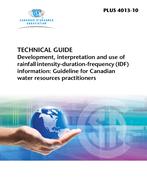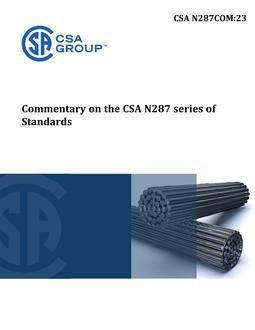
CSA PLUS 4013 (1st ed. pub 2010)
- Comments Off on CSA PLUS 4013 (1st ed. pub 2010)
- CSA
Click here to purchase
Introduction to this Guideline
Canada has significant investments in storm water, drainage, waste water, and flood management systems. Every day Canadians rely on this infrastructure to protect lives, property, and natural systems such as creeks, rivers, and lakes. In designing and managing these works, practicing professionals need to be concerned with the probability of occurrence of extreme amounts of rainfall, often for specific storm durations.Rainfall intensity-duration-frequency (IDF) information describes the probability of occurrence of extreme rainfall events of various rates and durations. IDF values are acritical input to a number of analytical techniques routinely used in the design and management of water resources infrastructure.
This Guideline is intended to help ensure that rainfall IDF characteristics are properly considered in the planning, design, and management of water infrastructure, by makingclear the assumptions contained within current IDF information, and addressing what the limitations of this information might be. The implications of climate change for the occurrence of extreme rainfall events and, therefore, the interpretation of existing IDF values are also addressed.
The Guideline has four main objectives, as follows:
(a) Take stock of how rainfall intensity-duration-frequency (IDF) information has traditionally been developed in Canada;
(b) Clarify assumptions embedded within current IDF information which may be of potential significance for water resources practitioners;
(c) Highlight from a scientific as well as a water resources practitioner perspective shortcomings in, and potential opportunities for, improving the quality and application of IDF information in Canada; and,
(d) Suggest what the implications of climate change might be for the development, interpretation, and use of rainfall IDF information.
Product Details
- Published:
- 07/01/2010
- ISBN(s):
- 9781554914326
- Number of Pages:
- 172
- File Size:
- 1 file , 4.1 MB



